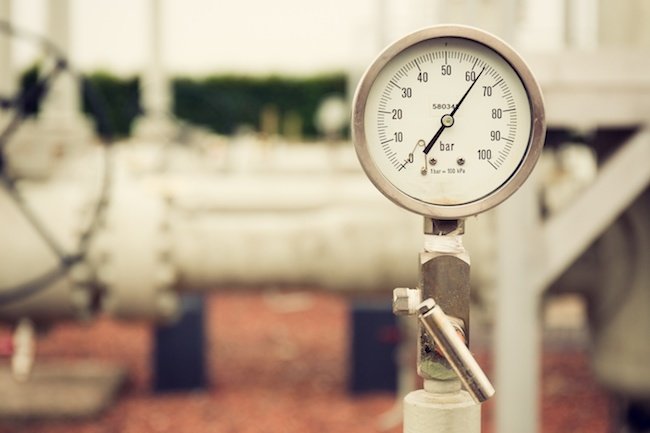There are many factors to consider when measuring pressure. Among these, of course, are the actual properties of the medium.
One fundamental distinction is whether this is a compressible or incompressible medium. Compressible media are substances whose densities, and thus also their volumes, are pressure-dependent. This grouping applies to gases. Incompressible media, on the other hand, have a constant volume, regardless of the pressure, with liquids more likely to form part of this category. It should be noted, however, that incompressibility represents an ideal scenario that does not exist in reality. Nevertheless, liquids such as water or hydraulic oil are in practice referred to as incompressible, since they are incompressible in a first approximation. It is assumed that water inside pipelines is incompressible under normal conditions, since this simplifies calculations enormously and any resulting errors will be negligible.
An example of this is the calculation of volumetric flow. Since liquids are incompressible in a first approximation, namely their density does not change, if the cross-sectional flow is widened or narrowed at a constant volume flow (and a pressure change is thus brought about), the law of continuity then applies:
Q = A1 •v1 = A2 •v2
For gases, the law of continuity in this form does not apply due to its compressibility.
In saying this, we have slightly anticipated the next point. The distinction between statics and dynamics is also important here. Statics denotes an equilibrium of forces. In this case, no flow occurs due to the equalization of pressure differences.
Dynamics, however, is quite different. In this case, we differentiate between different types of flow.
- Steady flow: A steady flow exists when the flow rate remains constant over time.
- Transient flow: A transient flow arises when temporal changes occur. This is the case with pumps and valve openings, for example. It can range from dynamic shocks to pressure spikes, which can also damage the pipes.
- Laminar flow: In a laminar flow, the fluid flows in non-intermixing layers. There is no turbulence here and the individual layers can have different speeds.
Friction also plays a major role. A distinction is made here between outer and inner friction. The former refers to the friction that exists between the fluid and a wall (e.g., the inner wall of the conduit through which the fluid flows). An inner friction is found in the case of a laminar flow, for example, where the individual layers of fluid rub against one another. The friction that acts upon flow depends on various parameters and requires complex calculations. Those parameters include inner-wall roughness, flow velocity, density and viscosity. The latter of these also depends on temperature, which then further complicates the end calculation.
Returning now to the distinction between statics and dynamics. We speak of static pressure measurement when we seek to establish the gravitational pressure (also termed hydrostatic pressure). This refers to the pressure that arises from a still fluid under the influence of gravitational pull. Hydrostatic pressure is measured, for example, to detect the levels in tanks. Here also, the distinction between compressible and incompressible media is essential, since the calculation of the hydrostatic pressure of water, for example, is so much easier than that of a compressible gas.
The mass of incompressible media is its density times its volume, and thus the density, times the area, times the height. For the calculation of hydrostatic pressure, we use:
p = F/A = ρAhg/A = ρgh
p = pressure
F = force
A = area
ρ = density
h = height
g = gravitational force
The pressure in this equation is proportional to the depth of the medium. The shape or the cross-section of the container plays no role here. The hydrostatic pressure is thus independent of the volume within a vessel, and is instead related to the filling level. This phenomenon is also known as the hydrostatic paradox.

You can read more here about hydrostatic fill-level monitoring in tanks on a piezoresistive basis.
While static pressure is used for fill-level measurement, dynamic pressure measurements are needed to measure a volume flow or a flow quantity.You can read more about this here.
